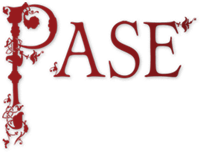Table of Contents
Top of page
Name
Summary
Distribution Map
Property List
Profile
Bibliography
Bottom of page
Jorain 2
Jorain ‘of Wolverton’ (Hants), fl. 1066
Male
DWP
4 of 5
Name
Summary
Jorain 2 had 1 hide on the Isle of Wight TRE, which he held in parage under King Edward (Edward 15); he survived the Conquest and retained his estate in 1086, albeit as a subtenant of William fitzStur (William 52).Distribution map of property and lordships associated with this name in DB
List of property and lordships associated with this name in DB
Holder 1066
| Shire | Phil. ref. | Vill | DB Spelling | Holder 1066 | Lord 1066 | Tenant-in-Chief 1086 | 1086 Subtenant | Fiscal Value | 1066 Value | 1086 Value | Conf. | Show on Map |
|---|---|---|---|---|---|---|---|---|---|---|---|---|
| Hampshire | IoW6,7 | Wolverton | Juran | Jorain 'of Wolverton' | Edward, king | William fitzStur | Jorain | 1.00 | 0.50 | 0.50 | B | Map |
| Totals | ||||||||||||
Subtenant in 1086
| Shire | Phil. ref. | Vill | DB Spelling | Holder 1066 | Lord 1066 | Tenant-in-Chief 1086 | 1086 Subtenant | Fiscal Value | 1066 Value | 1086 Value | Conf. | Show on Map |
|---|---|---|---|---|---|---|---|---|---|---|---|---|
| Hampshire | IoW6,7 | Wolverton | Juran | Jorain 'of Wolverton' | Edward, king | William fitzStur | Jorain | 1.00 | 0.50 | 0.50 | B | Map |
| Totals | ||||||||||||
Profile
Jorain 2’s estate was called Vlwardcūbe ‘Wulfweard’s coomb’ in DB, and can be identified as one of two small estates (the other being Vluredestune ‘Wulfweard’s estate’) located at Wolverton, along a small valley in the south-west of the Isle of Wight (Munby 1982: DB IoW6,7 Notes). Although the date and nature of Wulfweard’s presumed tenure cannot be determined, there must be a strong case for regarding the estates as two halves of an earlier 2-hide estate.Both estates were also held in parage TRE, implying that each constituted inherited family land, and given the nominal association of the two estates it may be that the two TRE holders Jorain 2 and Ælfric were related; to have both Old French and Old English names occurring in the same pre-Conquest family would be unusual by not unprecedented, particularly near the south coast (cf. Lewis 1995: 134-6). Against this suggestion, however, may be that the estates passed to different post-Conquest lords and that only Jorain’s was said by DB to have been held of King Edward (Edward 15). Given that the land was held in parage it is more likely that Jorain was in the king’s lordship by commendation rather than dependent tenure.
Be that as it may, Jorain survived the Conquest and was still holding his estate in 1086, albeit by then as a subtenant of William fitzStur (William 52). At that time his estate was worked by a small dependent peasant population of three households (1 villan and 2 bordars) with one plough on the arable and a mere ½ acre of meadow, presumably to provide winter hay for the draught animals. The estate’s main crop was probably grain, because Jorain also had a mill that rendered 35d; this may indicate that it was the more south-westerly of the two Wolverton estates, since that was where the mill was located in later times. It is possible that the medieval family of Woolverton were Jorain’s descendants (Page 1912: 282).
This was the only estate recorded in DB as being held by someone called Jorain either TRE or TRW and there is no reason to consider him in connection with any other estate or person.
Bibliography
Lewis 1995: C. P. Lewis, ‘The French in England before the Norman Conquest’, Anglo-Norman Studies 17 (1995), 123-44
Munby 1982: Domesday Book 4: Hampshire, ed. J. Munby (Chichester, 1982)
Page 1912: The Victoria History of Hampshire and the Isle of Wight: Volume Five, ed. W. Page (London, 1912)
